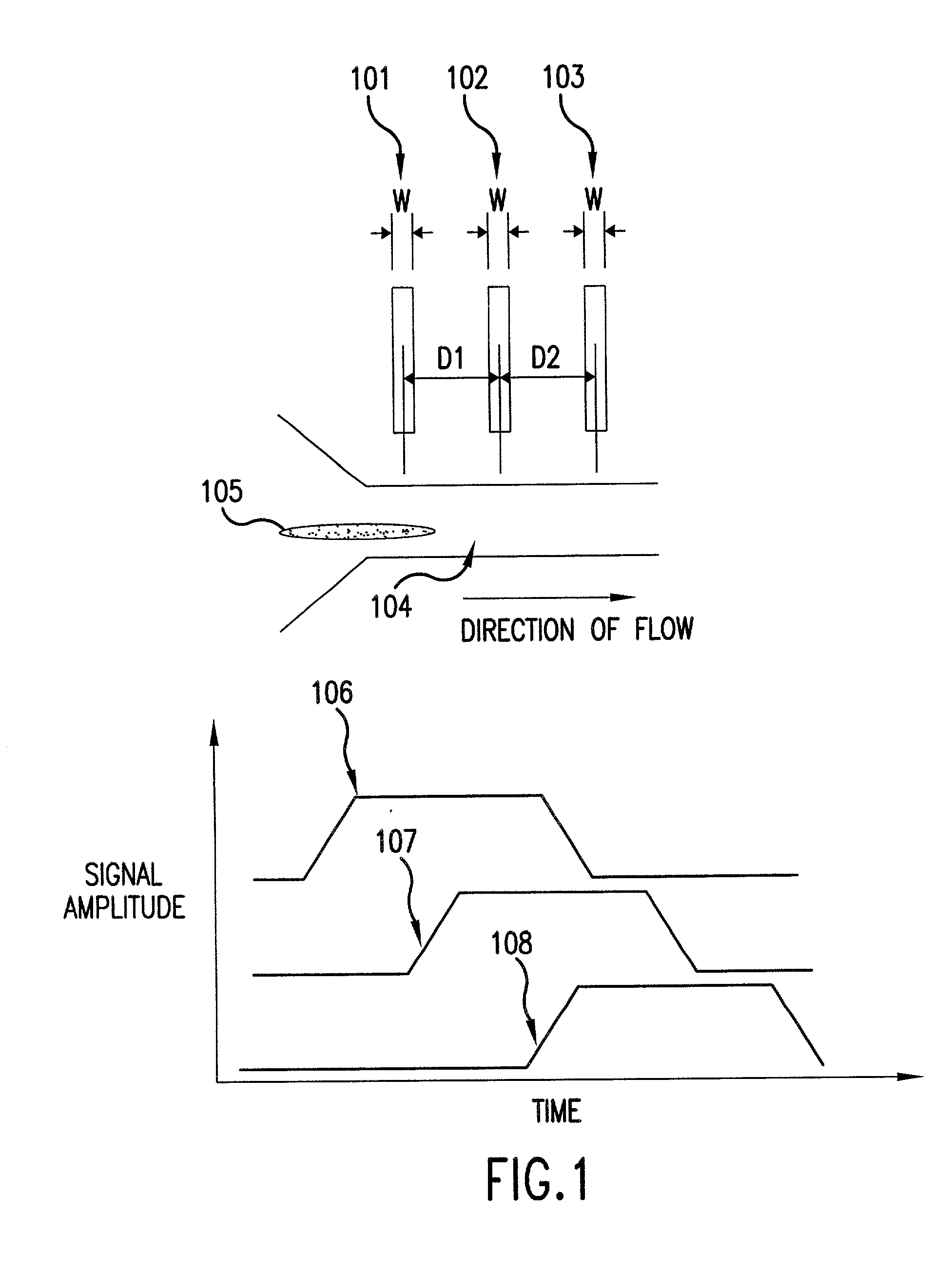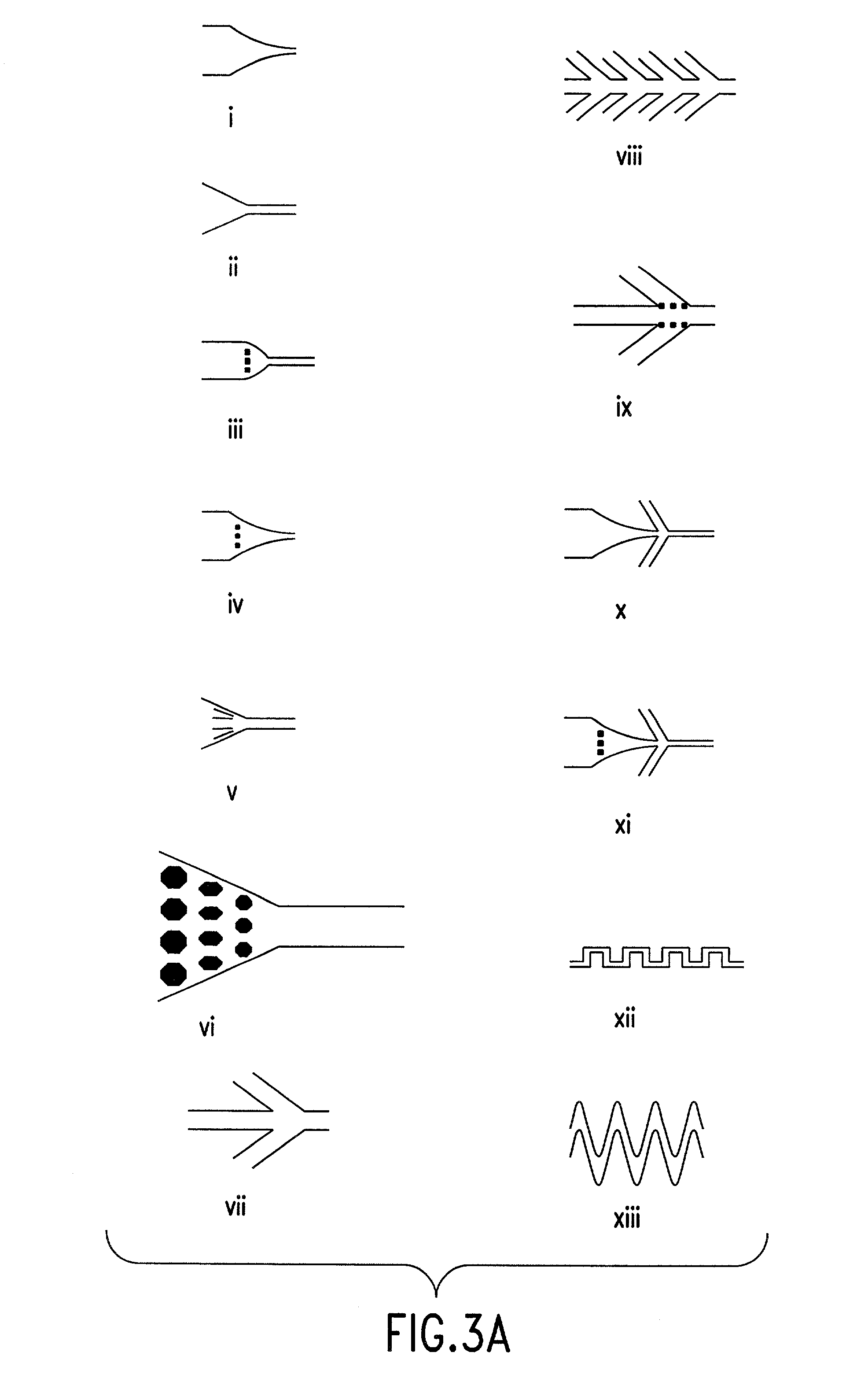Methods and apparatuses for characterization of single polymers
a single polymer and characterization technology, applied in the field of single polymer characterization methods and apparatuses, can solve the problems of reducing the amount of sample material generated, and avoiding tedious efforts in generating large amounts of sample material, so as to reduce the channel depth
- Summary
- Abstract
- Description
- Claims
- Application Information
AI Technical Summary
Problems solved by technology
Method used
Image
Examples
example 1
6.1 EXAMPLE 1
Fabrication of a Chip For Stretching DNA and its use in an Apparatus for Detecting Fluorescene Emission From Labeled DNA
[0231] Experimental Apparatus
[0232] A sensitive optical apparatus for detection is shown in FIG. 25. The apparatus utilizes confocal fluorescence illumination and detection. Confocal illumination allows a small optical volume (of the order of femtoliters) to be illuminated. Both Rayleigh and Raman scattering are minimized using a small probe volume. The beam from a 1 mW argon ion laser is passed through a laser line filter (514 nm), directed to a dichroic mirror, through a 100.times.1.2 NA oil immersion objective, and to the sample. The fluorescent tag on the DNA can be one of several dyes including Cy-3, tetramethylrhodamine, rhodamine 6G, and Alexa 546. In addition, intercalator dyes can be used such as TOTO-3 (Molecular Probes). The fluorescence emission from the sample is passed through a dichroic, a narrow bandpass (e.g. Omega Optical), focused on...
example 3
6.3 Example 3
Stretching of Phage Lambda DNA Using Apparatuses of the Invention
[0249] The data shown in FIGS. 37-39 were derived from a dual laser spot arrangement as illustrated in FIG. 36. The DNA was driven through a quartz chip with etched nanochannel of the following design: The depth of the quartz chip is 300 nm. The chip was fabricated using electron beam lithography that involved a series of steps known in the art, which include coating the quartz wafer with a resist, exposing the required areas using a resist using the electron beam, stripping the exposed resist, and etching using reactive ion etch to give straight wall profiles, and finally removing the resist. The laser used to excite dye molecules was a argon ion laser running at 488 nm. The laser delivers about 2 mW of laser power to each of the spots. The spots were diffraction limited, with a spot size of approximately 0.5 microns in diameter. The laser spots were separated 15 .mu.m apart and located along the directio...
PUM
| Property | Measurement | Unit |
|---|---|---|
| diameter | aaaaa | aaaaa |
| diameter | aaaaa | aaaaa |
| lengths | aaaaa | aaaaa |
Abstract
Description
Claims
Application Information
 Login to View More
Login to View More - R&D
- Intellectual Property
- Life Sciences
- Materials
- Tech Scout
- Unparalleled Data Quality
- Higher Quality Content
- 60% Fewer Hallucinations
Browse by: Latest US Patents, China's latest patents, Technical Efficacy Thesaurus, Application Domain, Technology Topic, Popular Technical Reports.
© 2025 PatSnap. All rights reserved.Legal|Privacy policy|Modern Slavery Act Transparency Statement|Sitemap|About US| Contact US: help@patsnap.com



